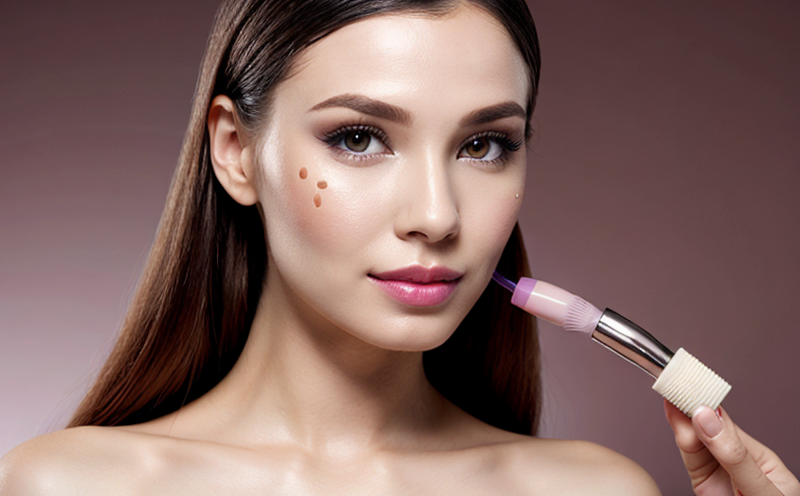In Vitro Reconstructed Human Gingiva Testing for Oral Cosmetics
The In Vitro Reconstructed Human Gingiva (Rhg) testing method represents a significant advancement in the field of cosmetic safety, particularly for products intended to interact with oral mucosa. This technique leverages advanced tissue engineering and biotechnology to create a three-dimensional model mimicking human gingival tissues. The reconstructed gingiva is exposed to various test substances under controlled conditions, providing insights into potential adverse effects on oral health.
The process begins with the selection of appropriate cell types—fibroblasts, keratinocytes, and endothelial cells—which are cultured in a specialized bioreactor designed to mimic physiological conditions. The reconstructed gingiva is then subjected to a series of tests that simulate real-life scenarios, including contact with various oral care products such as toothpaste, mouthwash, and chewing gums.
The testing parameters include assessing the cytotoxicity of the product by monitoring cell viability and morphology using fluorescence microscopy. Additionally, permeability studies are conducted to evaluate how well the substance passes through the tissue model. This helps determine whether a product can cause irritation or damage upon contact with oral mucosa.
| Test Parameters | Description |
|---|---|
| Cytotoxicity Assay | Metric to evaluate cell viability and morphology post-exposure. |
| Permeability Studies | Measure the ability of the substance to pass through the tissue model. |
| Inflammatory Response | Evaluate the potential for inflammation using biomarkers and histological analysis. |
The reconstructed gingiva model allows for a more accurate prediction of how a cosmetic product will behave in vivo, thereby reducing the need for animal testing. It also offers several advantages over traditional methods such as faster turnaround times and lower costs associated with resource-intensive procedures.
Compliance officers and quality managers can benefit greatly from this technology by ensuring their products meet stringent safety standards set forth by regulatory bodies like the European Union Cosmetics Regulation (EC) No 1272/2008. By incorporating Rhg testing into their development processes, companies demonstrate commitment to responsible innovation and consumer protection.
For R&D engineers working on novel oral care formulations, this method provides an invaluable tool for optimizing product design early in the development stage. They can identify potential issues before large-scale manufacturing investments are made, leading to more efficient product launches and reduced time-to-market.
Eurolab Advantages
- State-of-the-art facilities equipped with advanced bioreactor technology for tissue engineering.
- Trained specialists experienced in reconstructing human gingiva models and conducting comprehensive safety assessments.
- Comprehensive quality management systems ensuring all tests comply with international standards such as ISO 10993-5 (biocompatibility).
- Access to a wide range of ancillary services including formulation analysis, packaging compatibility studies, and stability testing.
Eurolab's commitment to excellence is reflected in its robust infrastructure and experienced team. Our clients can expect nothing less than the highest quality results when partnering with us for their cosmetic safety assessments.
Quality and Reliability Assurance
- ISO/IEC 17025 accreditation ensuring compliance with international standards.
- Regular calibration of equipment to maintain precision and accuracy in all measurements.
- Stringent quality control measures during sample preparation, testing, and data analysis.
- Use of validated protocols based on scientific literature and best practices within the industry.
At Eurolab, we prioritize accuracy and reliability in every test conducted. Our rigorous QA processes ensure that our clients receive dependable results they can trust.
Use Cases and Application Examples
- New Product Development: Early-stage evaluation of new oral care formulas to identify potential safety concerns.
- Formulation Optimization: Refinement of existing products based on tissue response data.
- Regulatory Compliance: Meeting requirements set by global regulatory bodies for cosmetic safety.
- Ingredient Safety Assessment: Determining the safety profile of individual ingredients used in oral care products.
The In Vitro Rhg testing method is widely utilized across various industries, providing a reliable alternative to animal-based methods. By leveraging this technology, companies can ensure their products are safe for consumers without compromising on efficacy or innovation.





